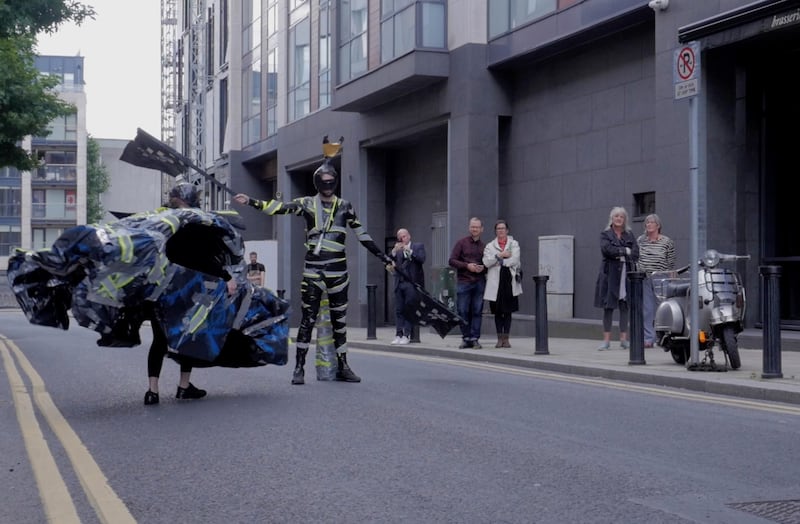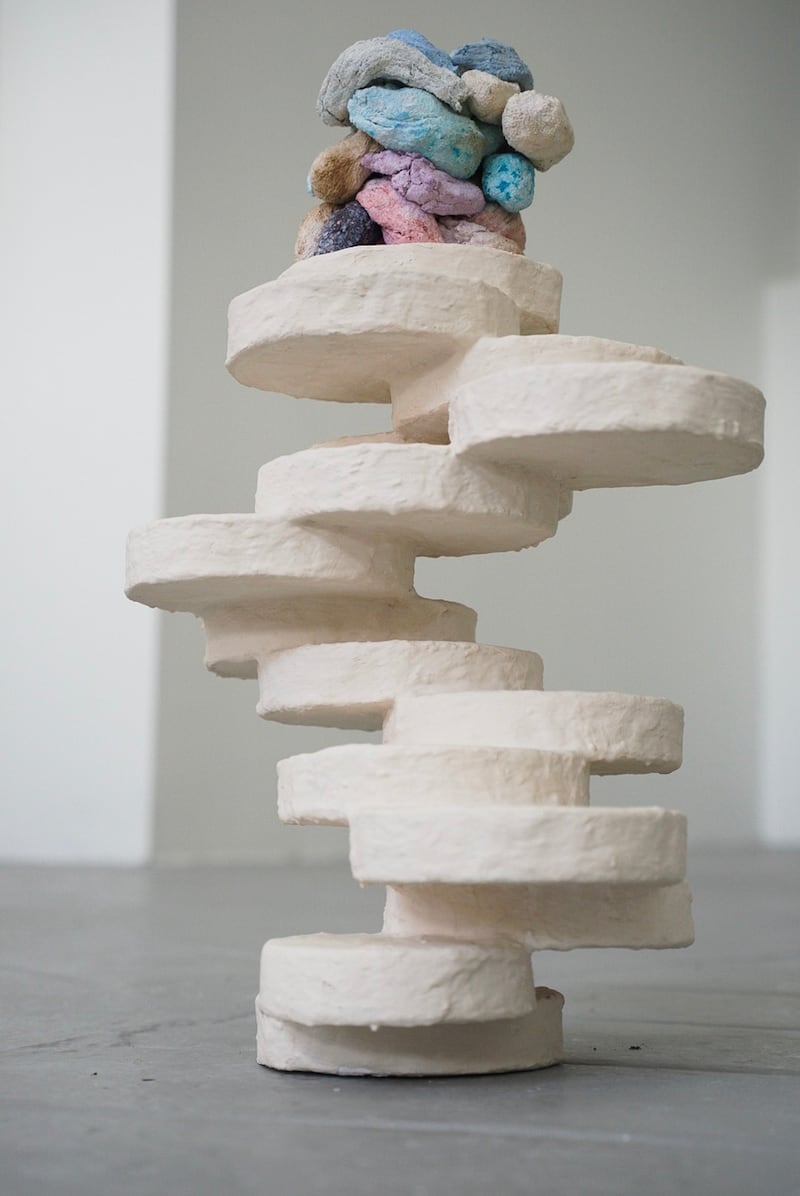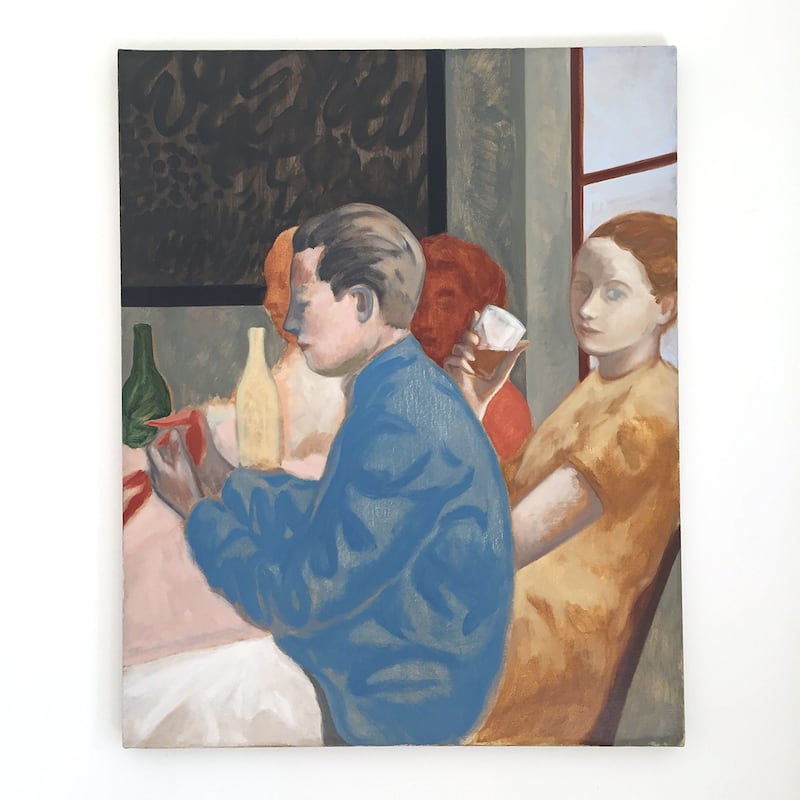Futures, Series 3, Episode 3: Anishta Chooramun, Jane Fogarty, Celina Muldoon, Sven Sandberg, Mary Sullivan and Harry Walsh Foreman
RHA Gallagher Gallery, Dublin. Until January 26th
★★★★☆
Can there be a more dispiriting accolade for a young artist than to be labelled as one of 10 or a dozen "most promising" or "worth watching" of their generation? Surely not to be one of the chosen few is worse. But there is a lot to be said for being allowed to get on with what you're doing without the pressure of being trapped by expectation and presumption. The RHA's Futures has consistently tried to work around the "most promising" curse by setting up its stall a bit further along the road, at a point when artists have begun to consolidate their identities and reputations, the latter within some and not necessarily all of the various camps of interested parties. And it has worked pretty well.
To the extent that this year’s Futures, if perhaps a bit more predictable than last year’s, is an impressively polished production that yet manages to challenge expectations and suggests an openness to left-field arrivals – if anything can be reasonably termed left-field in contemporary art, where left-field is the new normal.
To wit, Celina Muldoon, whose exuberantly inventive performance works recall the extravagantly anarchic energy of Monster Chetwynd’s productions, some taking as their starting point pop culture hits. Muldoon’s performance event Sirens Part II, based around the Kevin Kavanagh Gallery, caught the eye of Futures curators Patrick Murphy and Ruth Carroll. Apart from a video record, what we see in the absence of performance is mostly sculptural props and costumes, plus graphic works in a similar vein. All of it is effective.
Ritual performance
Performance is also part of Mary Sullivan’s work, usually in a formalised, ritualistic way, often with relevance to specific locations and environments. In several rigorous, research-based projects she sets out to interrogate a number of codes and structures, be they linguistic, cognitive or political, often with regard to social, gendered roles. She has a particular, analytical aesthetic with a stern, almost didactic seriousness of tone.





Is Sven Sandberg’s work left-field in the context of a left-field orthodoxy? He makes gentle, representational paintings with a retro quality. He is from California but seems firmly based in Ireland. He completed his MFA at NCAD in 2016. His paintings depict individuals or groups in relaxed, social settings. Often the mood and ambience recalls aspects of F Scott Fitzgerald or perhaps Henry James: Americans of privilege at leisure in Europe. Not always; a magic realist element also recurs. He paints exceptionally well, and he excels at conveying a sense of the inner, emotional lives of the people we are looking at in the work. This is crucial. We’re not casting a judgmental eye over the foibles of the rich, say, rather we are enabled to identify with these people on a human level. In some respects, there’s a sympathy between Sandberg’s work and that of Cristina Bunello.
Jane Fogarty has said that her work has to do with her interest in the passing of time. Time seems to mesh and melt in her sculptural pieces, apparently made with coloured-paper pulp. Closely related paintings are based on the sculptural arrangements. Dalí’s melted timepiece comes to mind, though the feeling of Fogarty’s work is something else entirely. Each sculpture struggles with gravity, as you might expect of wet paper, enacting the struggle in a playful way.
Elegant sculpture
Anishta Chooramun, born in Mauritius, won the 2018 RHA Graduate Studio Award – a very useful one-year residency in an RHA studio, plus a modest cash prize. Her sculptures are elegant arrangements of interlocking, overlapping forms, lines and planes, made with diverse materials in unusual combinations. Her feeling for texture and colour is very well judged – as is everything about her work, really. Each piece, with its inner diversity, achieves a relaxed, overall coherence. The idea of a three-dimensional jigsaw puzzle comes to mind. Appositely, as Chooramun has referred to jigsaws as a way of reading her pieces. To interpret her pieces politically: societies, she might imply, are invariably heterogeneous arrangements rather than homogenous monoliths, despite the delusions of many purists.
Harry Walsh Foreman has been consistent in his interest in Dublin street life and character. Life-size cut-out caricatures, strongly graphic in nature, come with succinct snippets of apposite Dublin wit on the reverse. His First World Problems series indicates a satirical edge but, while he doesn’t pull his punches in terms of physical and psychological description, he never patronises or ridicules his subjects, and there a real sense that he collects material, visual and verbal, to capture something estimable and worthy in terms of their spirited responses to an abrasive world. There isn’t a weak note in Futures, and every artist adds something valuable to the mix.



















